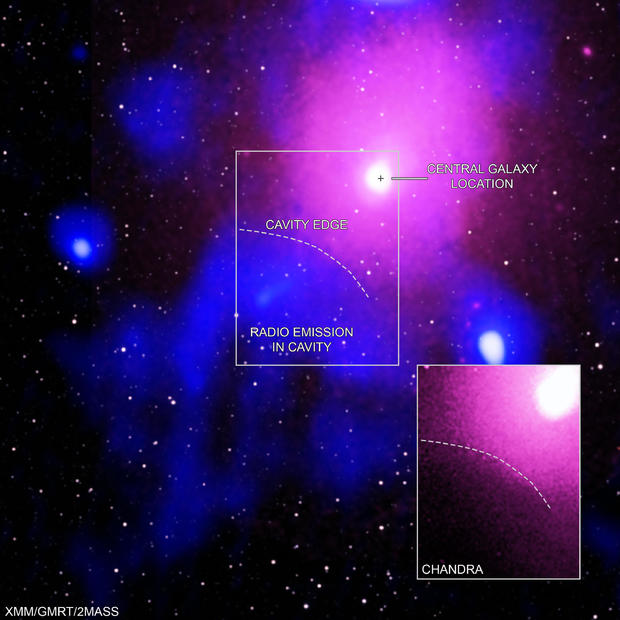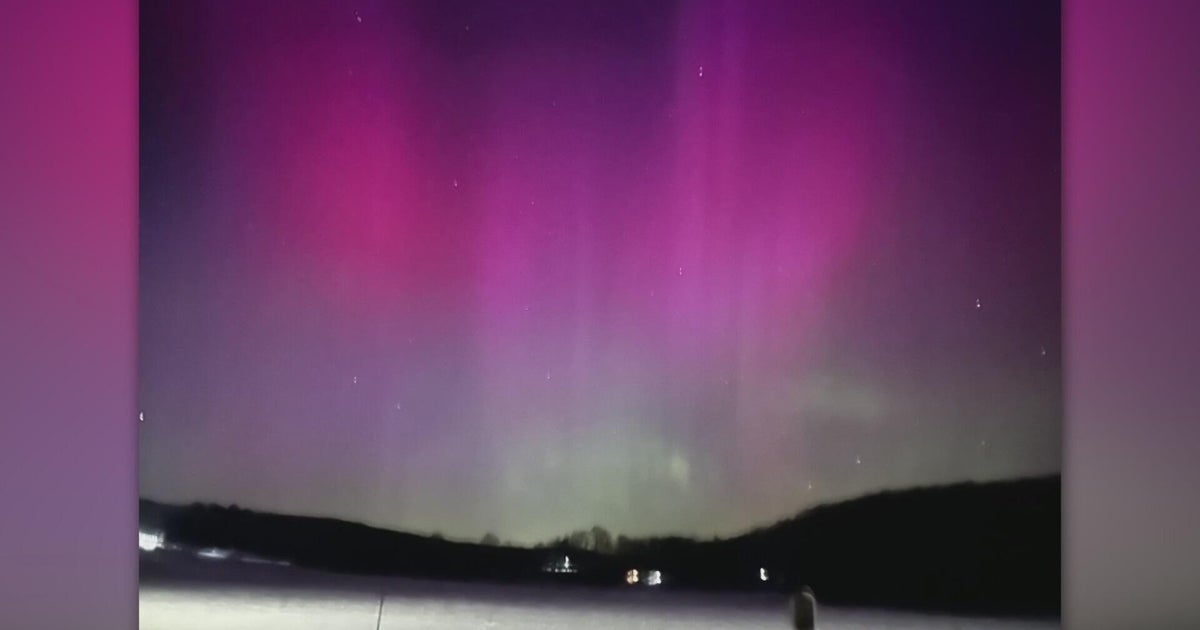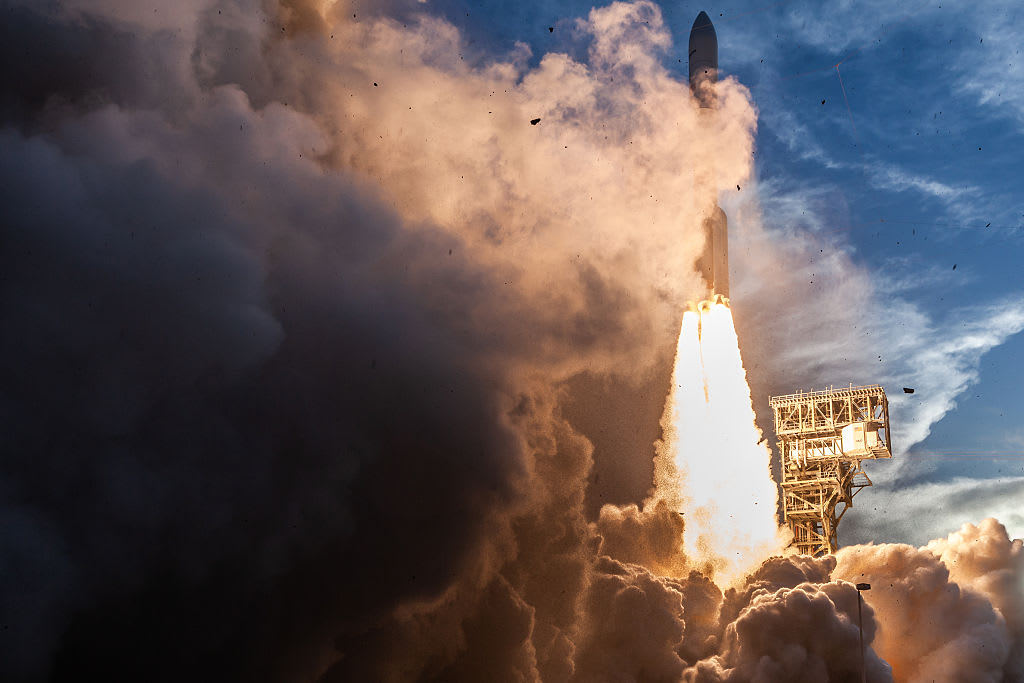Supermassive black hole causes biggest explosion ever spotted in the universe
The biggest known explosion in the universe has been spotted by astronomers — and it was so intense it punched a crater the size of 15 Milky Way galaxies into a part of space hundreds of millions of light-years away. Scientists say they've never seen anything like it.
According to a study published Thursday in The Astrophysical Journal, astronomers discovered the record-breaking eruption using X-ray data from several sources, including NASA's Chandra X-ray Observatory and ESA's XMM-Newton, and radio data from the Murchison Widefield Array (MWA) in Australia and the Giant Metrewave Radio Telescope (GMRT) in India. It was so massive, they have little to compare it to.
"In some ways, this blast is similar to how the eruption of Mt. St. Helens in 1980 ripped off the top of the mountain," lead author Simona Giacintucci of the Naval Research Laboratory in Washington, DC said in a press release Thursday. "A key difference is that you could fit fifteen Milky Way galaxies in a row into the crater this eruption punched into the cluster's hot gas."
The energy that created the explosion was about five times greater than that of MS 0735+74, which previously held the record for the largest explosion in the universe.
Scientists sourced the burst to the distant Ophiuchus galaxy cluster, which is about 390 million light-years from Earth. According to NASA, galaxy clusters are the largest structures in the universe, held together by gravity and containing thousands of galaxies, dark matter and hot gas.
Researchers believe the origin of the explosion is a supermassive black hole in a large galaxy at the center of the Ophiuchus cluster. While black holes are known for dragging material inwards, they can also blast material and energy outwards.
In this case, the black hole blasted out jets that created a huge cavity in surrounding hot gas a few hundred million years ago.
Astronomers first found evidence of the gargantuan explosion back in 2016, but they detected a cavity so large they thought it was impossible. With the help of new MWA radio data and archival GMRT data, researchers confirmed the cavity and found the explosion that created it.
"I was really happy when I saw these results," astronomer Norbert Werner, who made the observations in 2016, said in a blog post. "In our paper, we considered the possibility that the feature is a result of a record-breaking black hole outburst, but we discounted it as unlikely."
"This is one of the nearest galaxy clusters and it appeared to be too much of a coincidence to see such an outburst in our cosmic backyard," he continued. "Extraordinary claims need extraordinary evidence and the observation reported in this paper provides the evidence that we lacked."
Both observations spotted an unusual curved edge in the cluster that turned out to be part of a massive cavity created by the explosion.
"The radio data fit inside the X-rays like a hand in a glove," said co-author Maxim Markevitch of NASA's Goddard Space Flight Center in Greenbelt, Maryland. "This is the clincher that tells us an eruption of unprecedented size occurred here."
Scientists said the explosion is no longer happening, since new data doesn't show any current jet activity. The gas that once provided the black hole fuel for its growth and jets has likely moved on to another galaxy.
"This has been like discovering a dinosaur, with just a little piece (the unusual X-ray edge) sticking out at first and then suddenly a new kind of creature coming out from the ground," Giacintucci and Markevitch said in a blog post. "It is possible that comparing radio and X-ray cluster images will soon unearth many more such dinosaurs."
There is still one mystery that scientists have yet to piece together. Typically, jets blast out from both sides of a black hole, but radio emissions are missing from the other side.
"As is often the case in astrophysics we really need multiwavelength observations to truly understand the physical processes at work," said Melanie Johnston-Hollitt, a co-author from International Centre for Radio Astronomy in Australia. "Having the combined information from X-ray and radio telescopes has revealed this extraordinary source, but more data will be needed to answer the many remaining questions this object poses."






